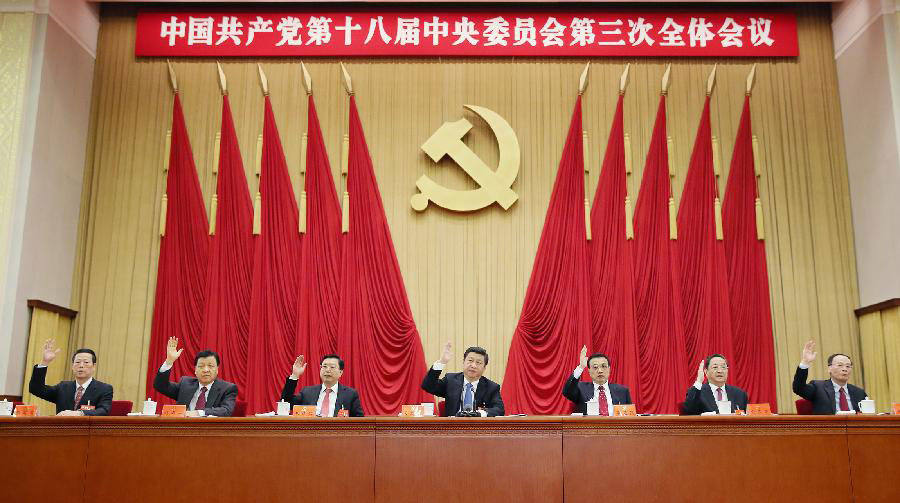Editors note: CPA fully agrees that we must fix dollar overvaluation to fix the trade deficit. We disagree with our good friend Rob Scott on his assessment of tariffs, which are important for national security, to optimize the composition of trade and jobs and to fix foreign trade cheating.
During the 2016 presidential campaign, Donald Trump cited my research prominently when making the case that unfair trade with China had grievously hurt workers in the United States. It wasn’t the first time my research had been referenced during a political campaign; Hillary Clinton cited it in a similar manner in 2007. But it was the first time my data informed a subsequent executive branch policy that I view with dismay: namely, the Trump administration’s heavy-handed approach to trade, which has involved imposing $250 billion worth of tariffs on Chinese goods.
[Robert E. Scott | October 23, 2018 | NY Times]
The president’s tariff approach ignores a more significant problem — the currency misalignment of the dollar and the Chinese yuan — and so could end up doing more harm than good.
Mr. Trump’s presidential campaign sought to channel the anger of many Americans over unfair trade. I understand this anger, having documented in my research the millions of manufacturing jobs lost in the United States as a result of flawed trading relationships with China and Mexico. But rhetoric doesn’t always equal insight, and the president’s approach ignores two key facts.
First, trade deals on their own don’t have much potential to help America’s workers. Contemporary trade agreements may be nominally concerned with rules and tariffs, but their primary outcome has been to tilt the playing field in favor of foreign investors, which merely continues a cycle of outsourced production. Tinkering at the margins, as evidenced by recent rewrites of the United States-Korea Free Trade Agreement and the North American Free Trade Agreement, alters mostly just the optics of trade policy. It sends a message that the president is “being tough.” But it’s unlikely to have a meaningful impact.
The second fact is that currency misalignment — not trade deals — is the single most important driver of growing United States trade deficits. From 1997 to 2014, China purchased $4 trillion in United States Treasury bills and other assets to bid up the value of the dollar relative to the Chinese yuan. (China sold some of its reserves in 2015 and 2016 to stabilize the yuan, but this year it again bought foreign assets to keep the yuan from rising.) This has made China’s currency artificially cheap, creating what is effectively a huge subsidy for Chinese exports to the United States. It also imposes a de facto tax on all United States exports to China.
China is not the only country doing this. Between 2006 and 2013, central banks in roughly 20 nations including China financed virtually all of America’s trade deficit. Growing United States trade deficits with these countries now account for most of the five million manufacturing jobs — and nearly 90,000 factories — lost in the United States in the past two decades. As my latest research demonstrates, trade with China alone has eliminated 3.4 million jobs in the United States since 2001, affecting every state and congressional district. Notably, the hardest-hit industry was not toys or apparel, but computers and electronic parts — long thought to be a source of America’s competitive advantage. It lost 1.2 million jobs.
Growing trade with low-wage countries like China has decimated the earnings of 100 million non-college-educated workers in the United States — two-thirds of the work force. And job losses have devastated entire regions of America’s industrial heartland, especially in the upper Midwest. Not surprisingly, this includes some of the once reliably Democratic states that President Trump carried in the last election.
Although China is no longer officially manipulating the value of its currency, the dollar remains significantly overvalued — in part because China is sitting on more than $3 trillion in foreign assets. The dollar is now overvalued by at least 25 to 30 percent against not just the Chinese yuan but also the Japanese yen and the euro. Notably, the dollar has risen further since Mr. Trump was elected, increasing roughly 6 percent in trade-weighted value since January 2018 alone, which further encumbers domestic manufacturers.
Unfortunately, currency misalignment can’t be fixed by updating trade deals. It’s a global problem driven largely by continuing foreign demand for United States securities and financial assets. Since 2014, private foreign investment in American financial assets has increased the dollar’s real, trade-weighted value by 20 percent. The dollar must be realigned against not just the Chinese yuan but also against the currencies of countries that have been running chronic trade surpluses for many years.
Previous Republican presidents have taken steps to tackle an overvalued dollar. (In 1971, for example, Richard Nixon imposed a temporary import surcharge on all imports; it led to an agreement four months later to lower the dollar’s value.) What’s required is the political will to stand up to powerful actors like Walmart and Apple that benefit from continued currency misalignment. The president should apply leverage on America’s trading partners — a fee on incoming foreign capital, tariff threats or coordinated currency intervention — to realign the dollar.
Congress could try to force the president’s hand, threatening to impose significant taxes on capital inflows to reduce demand for United States financial assets. But the authority to negotiate on currency rests in the hands of the executive. And until President Trump grasps the severity of the dollar problem, making a “great deal” on trade agreements will matter little for United States manufacturers.













